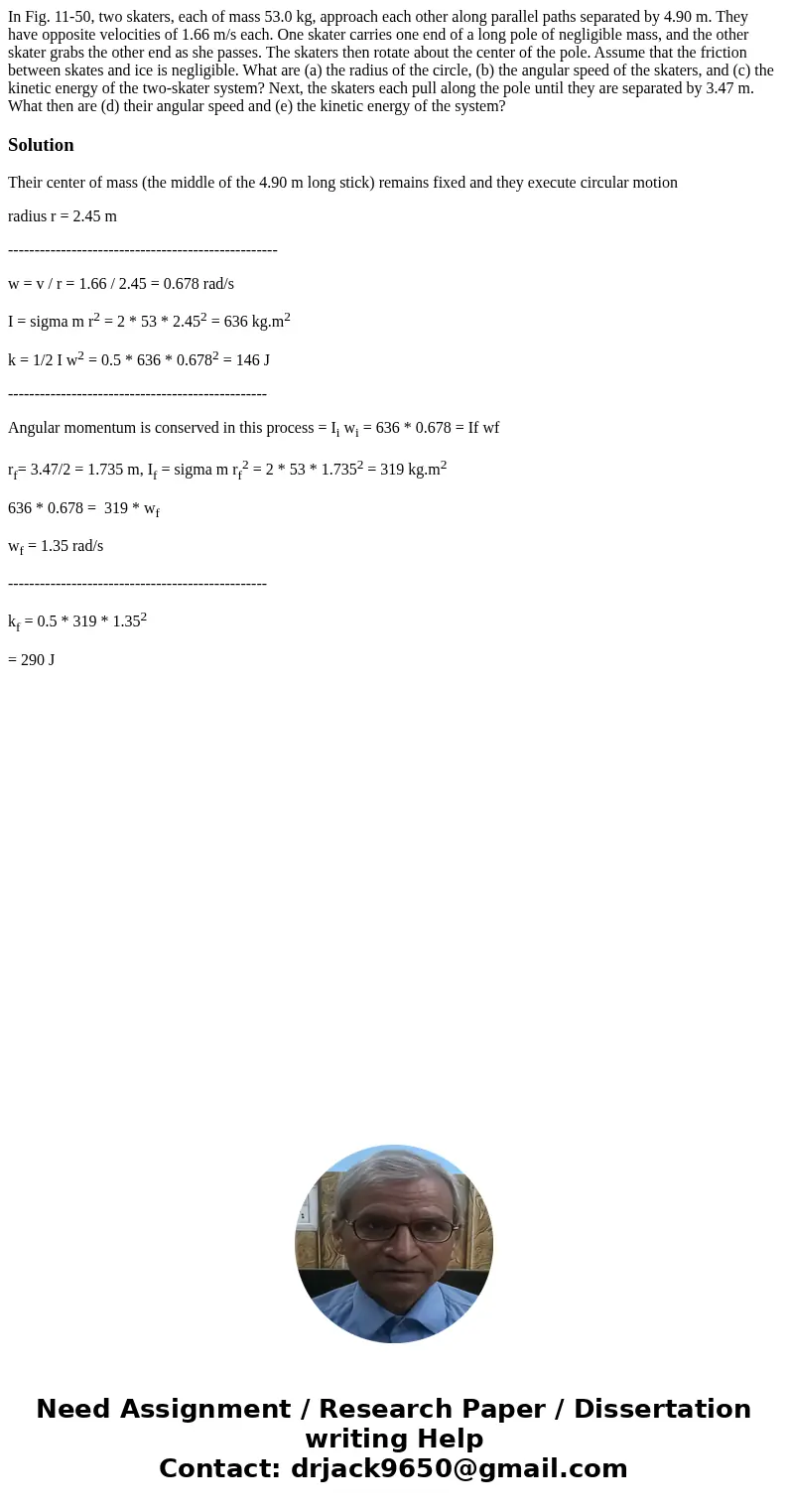In Fig 1150 two skaters each of mass 530 kg approach each ot
In Fig. 11-50, two skaters, each of mass 53.0 kg, approach each other along parallel paths separated by 4.90 m. They have opposite velocities of 1.66 m/s each. One skater carries one end of a long pole of negligible mass, and the other skater grabs the other end as she passes. The skaters then rotate about the center of the pole. Assume that the friction between skates and ice is negligible. What are (a) the radius of the circle, (b) the angular speed of the skaters, and (c) the kinetic energy of the two-skater system? Next, the skaters each pull along the pole until they are separated by 3.47 m. What then are (d) their angular speed and (e) the kinetic energy of the system?
Solution
Their center of mass (the middle of the 4.90 m long stick) remains fixed and they execute circular motion
radius r = 2.45 m
---------------------------------------------------
w = v / r = 1.66 / 2.45 = 0.678 rad/s
I = sigma m r2 = 2 * 53 * 2.452 = 636 kg.m2
k = 1/2 I w2 = 0.5 * 636 * 0.6782 = 146 J
-------------------------------------------------
Angular momentum is conserved in this process = Ii wi = 636 * 0.678 = If wf
rf= 3.47/2 = 1.735 m, If = sigma m rf2 = 2 * 53 * 1.7352 = 319 kg.m2
636 * 0.678 = 319 * wf
wf = 1.35 rad/s
-------------------------------------------------
kf = 0.5 * 319 * 1.352
= 290 J

 Homework Sourse
Homework Sourse